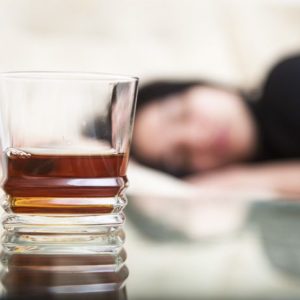 When you are struggling with cravings, it is important to realize that thoughts of substance abuse do not have to lead to actions. Reaching out to a sponsor or distracting yourself with a fun activity are two of the most commonly recommended tactics for dealing with cravings. Urge surfing, a type of mindfulness meditation, is another strategy you may also wish to try.
When you are struggling with cravings, it is important to realize that thoughts of substance abuse do not have to lead to actions. Reaching out to a sponsor or distracting yourself with a fun activity are two of the most commonly recommended tactics for dealing with cravings. Urge surfing, a type of mindfulness meditation, is another strategy you may also wish to try.
What Are Cravings?
In recovery, cravings are defined as intense desires or urges for drugs or alcohol. Cravings are most common in the early stages of recovery but can be experienced even after a person has been sober for several months.
Everyone is different, but some of the factors that can trigger cravings include:
- Feelings of depression
- Boredom
- Loneliness
- Tiredness
- Self-pity
- Feeling overconfident or taking recovery for granted
- Being frustrated by the slow progress of recovery
- Having unrealistically high expectations for recovery
- Reminiscing about past substance abuse
People in recovery sometimes compare cravings for drugs and alcohol to intense hunger. When you haven’t eaten for several days, your mind becomes preoccupied with food. Getting what you need to satisfy your hunger is all you can think about.
Urge Surfing Can Help
Urge surfing was developed by the late psychologist Alan Marlatt. He observed that urges to engage in unhealthy behaviors such as abusing drugs or alcohol are often experienced as a collection of physical sensations within the body. For example:
- Lack of appetite
- Headache
- Upset stomach
- A pins-and-needles feeling
- Tension in muscles
- Irritability
- Fatigue
Practicing urge surfing makes dealing with cravings a more manageable task by acknowledging sensations without attaching a value judgment to them. Extensive research has shown that cravings are normal. Experiencing cravings for drugs or alcohol does not mean that your recovery efforts are doomed or that you lack the willpower necessary to succeed in staying sober.
Urge surfing is essentially a type of mindfulness meditation. Mindfulness in recovery increases self-esteem, reduces anxiety, and eases depression. Other forms of substance abuse treatment using mindfulness include mindfulness-based relapse prevention (MBRP), mindfulness-based cognitive therapy (MBCT), and dialectical behavior therapy (DBT).
Urge surfing works because it promotes a greater awareness of the connection between the mind and body. When you understand the reasons for the physical sensations that come with your craving, you diminish their power. Reminding yourself that cravings are only temporary gives you the resolve to weather the storm until the craving passes and you can once again focus on other matters.
Here’s how to try urge surfing to manage your cravings:
- Chose a quiet and comfortable location to sit. Some people like to close their eyes to improve their focus, but this is a matter of personal preference.
- Think about the specific parts of your body affected by your craving, such as an upset stomach or tension in your shoulders.
- Describe how you are feeling in a calm and objective way. If you’re experiencing physical symptoms of a craving in more than one part of your body, focus on the most intense sensations first. Urges feed off fear, anger, and frustration, so doing your best to keep your emotions under control is critical.
- Focus on your breathing, but don’t make a conscious effort to change your breath.
- Wait one or two minutes, then shift your attention back to the parts of your body that were experiencing sensations related to your craving.Alternate between focusing on your breathing and the physical sensations you are experiencing until your craving subsides. It is helpful to think of your craving as a wave and your breathing as the surfboard. Waves rise and fall in the ocean, but a surfboard helps a person stay upright and in control of the situation.
- After your cravings have decreased to a manageable intensity, you can get up and continue with your day.
Cravings rarely last more than 30 minutes when you are using this technique. If you feed the urge by worrying about it, justifying it, or making plans to fulfill it, it will last longer and become more difficult to manage.
Practice Makes Perfect
Urge surfing, just like any other recovery-related skill, takes time to master. Don’t be discouraged if you find the technique to be difficult at first. Today’s technology-driven world moves at such a rapid pace that slowing down your thoughts to focus on just one thing is not an easy task.
If you’d prefer to listen to an audio recording for urge surfing guidance, some of the many tutorials on YouTube include:
- 3-Minute Urge Surfing by Kernel of Wisdom
- Urge Surfing Practice by TurnTeam
- Urge Surfing for Addiction by Brainwave Entrainment
Once you’ve become proficient in using urge surfing to handle your addiction-related cravings, you can choose to apply the concept to other areas of your life. Urge surfing can help you change a wide range of undesirable behaviors—including overeating, overspending, or lashing out in anger at those around you.





